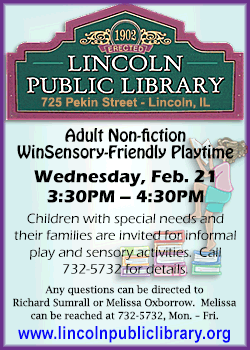|
 Researchers found that increased eligibility for a free bus pass led
to an 8 percent increase in the use of public transportation among
older people, and a 12 percent decline in depression symptoms among
those who started taking the bus when they became eligible for the
program. Researchers found that increased eligibility for a free bus pass led
to an 8 percent increase in the use of public transportation among
older people, and a 12 percent decline in depression symptoms among
those who started taking the bus when they became eligible for the
program.
Among the depression symptoms that people who took up bus travel
reported as reduced were “not enjoying life,” trouble sleeping,
feeling unhappy, lonely, sad, not motivated or that everything was
an effort, the study team notes in the Journal of Epidemiology and
Community Health.
“There has been a push from the World Health Organization to make
cities and communities more age-friendly, and our study suggests
that one way for governments to do so is by subsidizing public
transportation for older people,” lead author Erica Reinhard, of the
department of global health and social medicine at King’s College
London, told Reuters Health by email.

“This study should motivate policymakers from other countries to
adopt similar concessionary fare schemes that encourage public
transport use, increase social engagement and improve mental
health.”
In 2050, the U.S. population age 65 or older is projected to reach
83.7 million, according to the Census Bureau.
The likelihood of older adults living alone increases as they age,
and past research has shown that older people who stay engaged in
activities have better physical and mental health than those who are
isolated and lonely. A lack of social engagement can trigger mental
health problems and chronic illnesses, such as heart disease, in
this population, Reinhard’s team writes.
“I think this study is the first step forward to the development of
more effective treatments and the reduction of loneliness in the
elderly,” Dr. Stephanie Cacioppo, director of the brain dynamics
laboratory at University of Chicago’s Pritzker School of Medicine,
told Reuters Health in a phone interview.
“This won’t be achieved easily, however. Giving free passes is not
enough to help people interact with one another. Sharing good times
and providing and receiving mutual aid and assistance are more
important,” said Cacioppo, who was not involved in the study. “If
you put lonely people together they won’t be happy.”
Reinhard and colleagues examined data collected on 18,453 people
residing in England (age 50 or older) who were surveyed one or more
times between 2002 and 2014 for a long-term study.
[to top of second column] |

In 2006, free local bus travel for people 60 or older was
implemented in England, and in 2008 the program was extended to free
bus travel nationwide. This “natural experiment” allowed the
researchers to follow changes in mental health symptoms before and
after people became eligible for free travel.
Overall, 8.9 percent of the study group used public transportation
"a lot" or nearly every day during the study period. Another 11.3
percent used it “quite often,” or two to three times per week; 17.2
percent used it “sometimes,” or two to five times per month. About
30 percent used it rarely or less than once a month, and 32 percent
never used public transportation.
When researchers investigated the impact of eligibility for free bus
travel, they found that it was associated with a 51 percent
increased odds of people using public transportation. After
adjustment for factors like age, gender, disability and employment
and pension status, increased use of public transportation was
linked to an average 1-point decrease in scores on an 8-point scale
for measuring depression symptoms.
Increased transportation use was not linked to any change in
measures of social isolation or membership in groups, however.
The findings “suggest that benefits from increased transport use
likely stem from reduced loneliness, increased participation in
volunteering activities and increased contact with children and
friends,” Reinhard said.
A key limitation of the study, she acknowledged, is that they did
not have information on whether study participants lived in urban,
suburban, or rural areas.

“Since public transport infrastructure varies between urban and
rural areas, it is plausible that the free bus passes may have
different impacts based on where people live and the quality of
public transportation available. This is something we would like to
examine in future research,” she said.
SOURCE: http://bit.ly/2BMD3vI Journal of Epidemiology and Community
Health, online January 19, 2018.
[© 2018 Thomson Reuters. All rights
reserved.] Copyright 2018 Reuters. All rights reserved. This material may not be published,
broadcast, rewritten or redistributed.
Thompson Reuters is solely responsible for this content. |